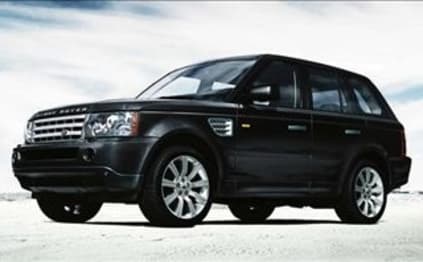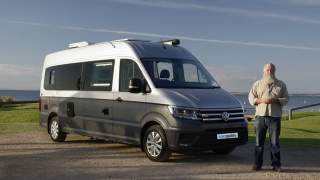
Land Rover Range Rover Sport 2006 Review
- Range Rover Sport
- Land Rover Range Rover Sport 2006
- Range Rover Sport Reviews
- Land Rover Reviews
- Land Rover SUV Range
- SUV
- Land Rover
- Prestige & Luxury Cars

Even if we reach the stage where fuel is dispensed by pipette, the qualities that have made SUVs successful — size, high riding position, perceived safety — will continue to be in demand.
One of the oddest niches to emerge is the performance SUV. The attributes needed to satisfy those two sets of demands in one car lie at opposite ends of the spectrum. But as BMW has shown with the X5, it is possible to make an SUV with respectable handling and with the Cayenne, Porsche has shredded the performance envelope.
They have done so by using car-like engineering and construction techniques then — effectively — adding a layer of offroad ability on top. They came at the problem from the performance end. But that option holds perils for traditional offroad makers like Jeep and Land Rover. Go down that path and you risk diluting your brand or abandoning, at least in part, your hard won credentials as a genuine rock-hopper.
For Land Rover, offroad ability must come first. Its performance SUV, the Range Rover Sport, has credentials here that are never in doubt. The rocky bridle track and gravel roads we drove it on tested its potential not a jot. But our confidence here is well-placed: this car shares its strong underpinnings and clever dial-a-dirt software with the Discovery, which has remarkable offroad prowess. The Sport has less ground clearance at 227mm and slightly shallower approach and departure angles. But the running gear and chassis engineering is the same.
The software, which debuted in the Discovery, allows the driver to set the car up for a range of different conditions with a single rotary selector. Chose the terrain, and the car adjusts everything from ride height to throttle and steering response so that it suits the conditions, then locks the appropriate differentials. It's as good as it gets.
But this comes at a price, and the Sport enters the SUV Sweepstakes severely handicapped by weight. At 2.5 tonnes unladen, it concedes about 400kg to an X5 or a Cayenne. The 4.4-litre V8 we drove develops 220kW and 425Nm and achieves a claimed acceleration to 100km/h of 8.9 seconds. Sounds OK. But mash the throttle and ... wait. Or should we say, weight. Even this engine, shared with Jaguar, struggles to get the show on the road. The engine makes a fair bit of noise, although it sounds less like it's straining and more like it's simply overwhelmed.
On the move, the deep growling V8 rumble at low revs becomes something of a lazy drone, changing note but not character as the six-speed automatic gearbox goes about its business. This is the excellent ZF transmission that's ubiquitous in luxury cars and it changes with exemplary smoothness. Which is just as well, because even one-up it had to change frequently to maintain momentum on inclines. Offroad or on snakey bitumen, we took pity on the unit and used the tiptronic shifter.
As expected, fuel economy will gladden the hearts of Shell executives with our 600km-plus mix of terrain returning 17.2 litres per 100km against a claimed figure of 14.9l/100km.
The Sport shares much with the Discovery but differs in size. The Sport is shorter and not as tall, but a shade wider. It has the bluff front and upright sides of other Land Rovers but an angled rear that's retro in feel with hints of earlier Range Rovers. Signature brand ingredients include a clamshell bonnet, distinctive headlight cluster and somewhat tacky vents. The sides feature flared plastic sill guards and plastic door handles of unusual texture. The tailgate is heavy but opens high and the glass lifts separately — very convenient. Under the rear there's a full-size spare.
The cabin shares its logical layout and most of its switchgear with the Discovery, which means appealingly functional plastics and rubber. Controls are logically arranged, although the buttons to set the height of the air suspension, dial in the terrain, activate hill descent control and engage low range are all behind the gear shifter and a bit tricky to reach. A double glovebox and centre bin provide adequate storage, supplemented by cupholders and dash trays — the door pockets are small.
The simple speedo design lacks the precise increments needed to avoid triggering Aussie speed cameras. Another minor grumble is the lack of a lane-change function on the indicator in a car that costs $101,000.
Up front, the seating position delivers on the SUV promise with a throne that offers excellent forward and side visibility, thanks to tall glass and a low "waistline". But rear visibility could be better and there's no camera to spot wayward toddlers.
While the boxy Discovery offers excellent accommodation for seven with the last row optioned, the Sport feels underdone for five. Most knees and feet will fit comfortably in the rear, but headroom is tighter than expected and the seat backs are low. While the rear seat split-folds and the bases flip forward, that doesn't readily result in a flat floor — not when the driver's seat is set for us, anyhow. Maximum cargo capacity is 2013 litres.
Ride and refinement expose the starting point for the Sport. Over broken tarmac ride quality deteriorates markedly as shudders and shakes find their way into the cabin. The suspension and tyres crash over bumps and at times kickback comes through the steering wheel. Cruising on smooth bitumen, excessive wind noise disturbs the peace while the one-note engine drone becomes tiresome.
Drive smoothly through sweepers and the Sport corners fairly flatly, although it does lean eventually. It dives a little under heavy braking, although the brakes themselves seem up to the substantial task.
However, try to hustle the Sport and you soon bounce off the laws of physics. Abrupt direction changes at speed are not its forte and in tighter corners there's the ever-present threat of perilous understeer. Leaning heavily, it pirouettes around on its outside wheel but keeps the driver guessing about its limits.
The Range Rover Sport looks the part, but there seems little to recommend it against others from the Land Rover stable: it's less functional than a Discovery and less luxurious than a Range Rover, while offering few performance advantages.
Verdict: 
Pricing guides
Range and Specs
| Vehicle | Specs | Price* | |
|---|---|---|---|
| 2.7 TDV6 | 2.7L, Diesel, 6 SP SEQ AUTO | $13,090 – 17,490 | 2006 Land Rover Range Rover Sport 2006 2.7 TDV6 Pricing and Specs |
| 4.2 S/C | 4.2L, PULP, 6 SP SEQ AUTO | $16,170 – 20,790 | 2006 Land Rover Range Rover Sport 2006 4.2 S/C Pricing and Specs |
| 4.4 V8 | 4.4L, PULP, 6 SP SEQ AUTO | $14,190 – 18,700 | 2006 Land Rover Range Rover Sport 2006 4.4 V8 Pricing and Specs |
$8,000
Lowest price, based on 7 car listings in the last 6 months







